The menu is an essential element of every restaurant and is often considered its showcase, right alongside the manager or the owner. It can take various forms, but the most common is a menu card.
For restaurant guests, the menu is a catalog of dishes and drinks from which they choose what they want to order. Whether this is actually the case is a topic we'll cover in our next post. From the restaurant owner's point of view, the menu is the primary sales tool (not to diminish the role of well-trained and experienced staff), and this is where the concept of menu engineering comes in.
Contrary to appearances, the concept of menu engineering is not new, and the use of the word "engineering" is not accidental. This concept is based on an analytical method developed by the Boston Consulting Group in 1970.
This method concerned the categorization of products and the development of actions to increase profits from their sales. But what does this have to do with restaurants? If we consider each item on the menu as a product we want to sell, then menu engineering, in simplified terms, is an analysis of the profitability and popularity of those products. Profitability should be understood as the potential net profit, so the best indicator in this case is the margin. Dish popularity is simply the number of items sold.
Conducting such an analysis every month is time-consuming and cumbersome, but the data can be analyzed less frequently, say, every three months. As a result, such a process is only carried out four times a year. However, it's important to remember that there is high seasonality in the restaurant industry, which can affect the analysis results.
Menu engineering, in simplified terms, is an analysis of the profitability and popularity of menu items.
Let's return to the analysis itself. Based on the two parameters mentioned earlier (profitability and popularity), it's possible to assign each dish in a category (e.g. main dishes) to the appropriate product group. Today, we'll use one of the more popular menu engineering models, which distinguishes four groups with easy-to-remember names. They are: popular and profitable Stars, popular but less profitable Plow Horses, less popular but profitable Puzzles, and unpopular and unprofitable Dogs.
In every menu, even a well-thought-out one, there is a place for each of these groups, and our goal should be to have more of the more favorable ones. The mere assignment of dishes to product groups tells us a lot, but it's not enough. What's most important in menu engineering is the properly chosen and effectively implemented actions towards each product group, and sometimes towards individual dishes within a group. This matter becomes a bit more complicated, but that's what we're here for!
Effectively carrying out menu engineering in a functioning restaurant radically improves the restaurant's financial performance while maintaining those previous turnovers - it's a tool that we recommend everyone use.
We hope we've shed some light on the concept of menu engineering and, furthermore, intrigued you enough to want to see for yourself that it works and can bring tangible benefits to your business.
